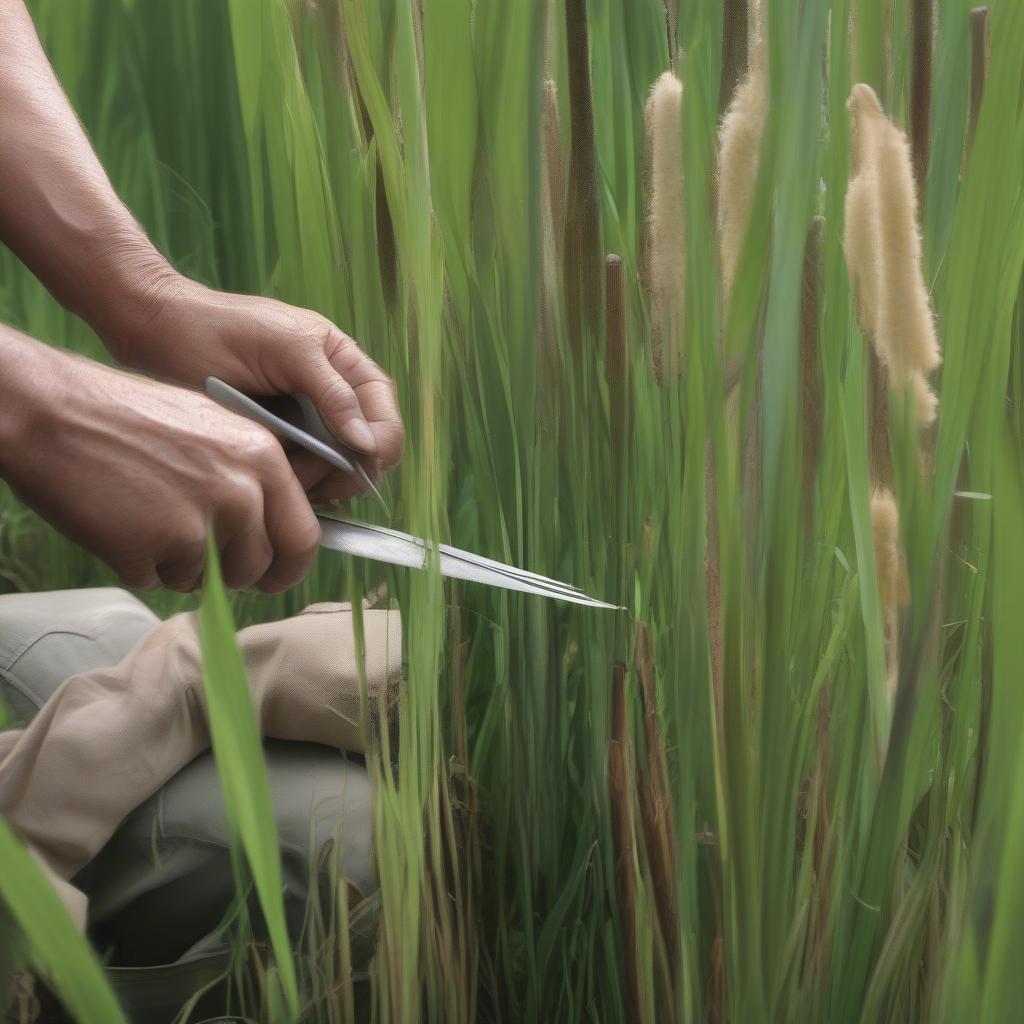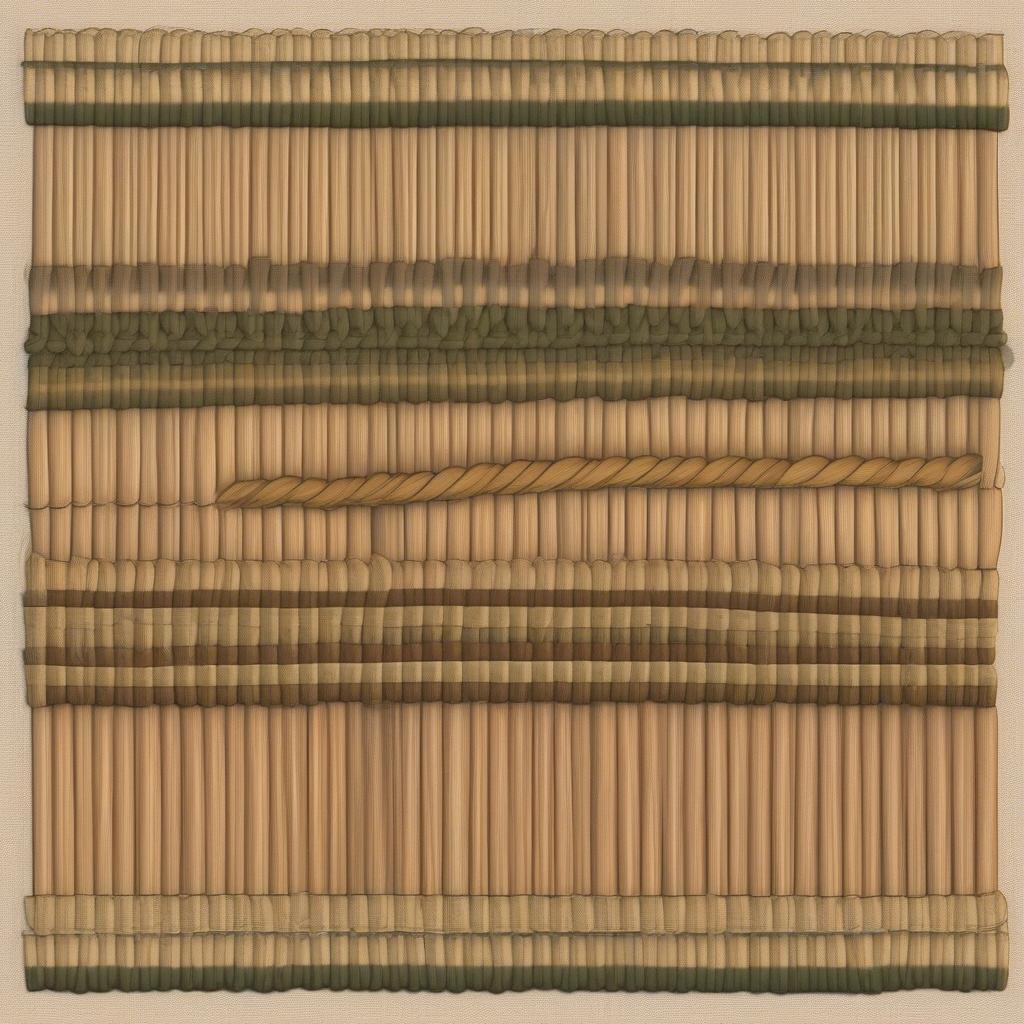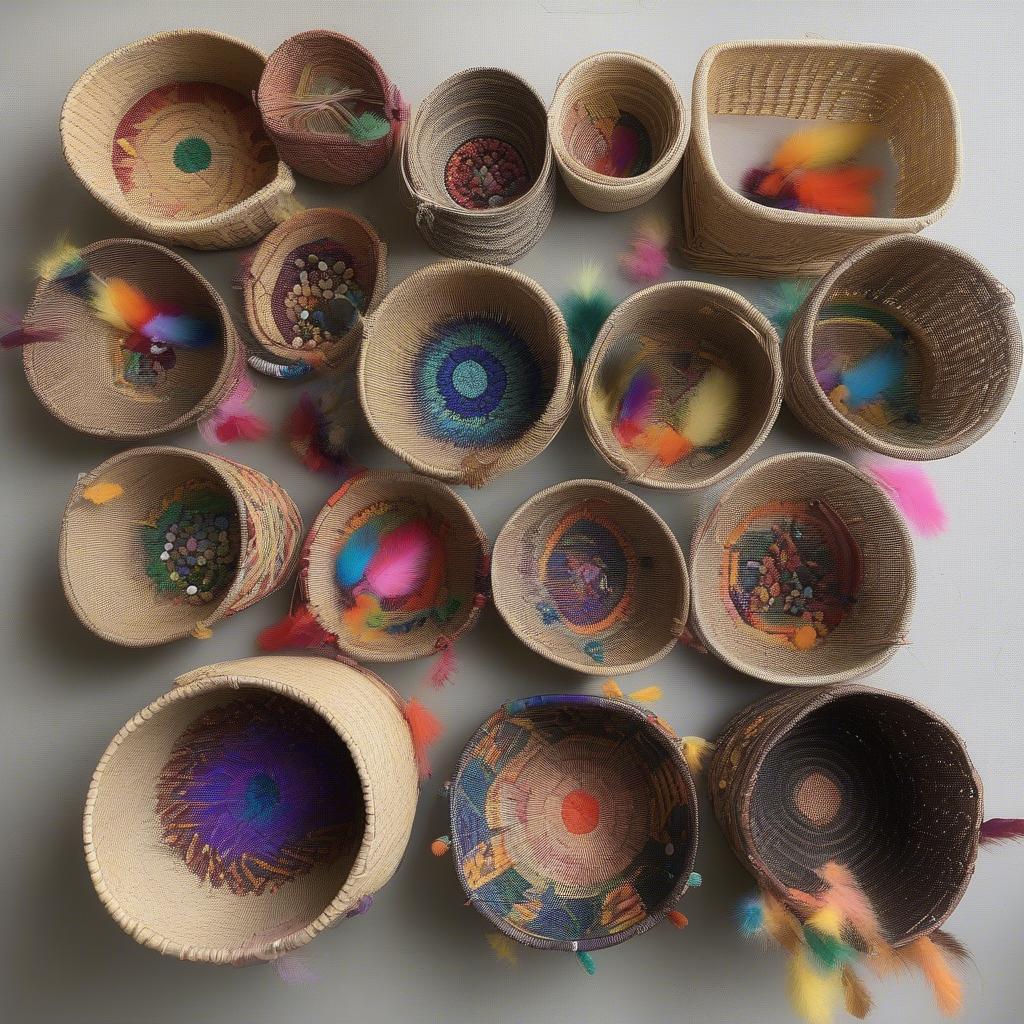Basket Weaving
Crafting Beauty: A Deep Dive into Cattails Basket Weaving
Cattails Basket Weaving is a captivating craft that transforms humble cattails into stunning, functional works of art. This age-old practice connects us with nature and allows us to create beautiful, sustainable pieces for our homes. From gathering the cattails to the final weaving techniques, we’ll explore everything you need to know about this fascinating art form. basket weaving with cattails
The Allure of Cattail Basket Weaving: A Sustainable Craft
Cattail basket weaving isn’t just a craft; it’s a connection to nature, a celebration of sustainable living, and a testament to human ingenuity. For centuries, cultures around the world have utilized this readily available resource to create practical and decorative items. Today, cattail basket weaving continues to thrive, appealing to both seasoned artisans and beginners seeking a fulfilling and eco-conscious hobby.
Gathering Your Materials: Harvesting Cattails for Basket Weaving
The first step in cattails basket weaving is gathering your materials. Ideally, harvest cattails in late summer or early fall when the leaves are green and pliable. Look for healthy, mature plants growing in shallow water. Cut the leaves close to the base, taking care not to damage the root system. After harvesting, allow the cattails to dry thoroughly in a cool, well-ventilated area.
 Harvesting Cattails for Basket Weaving
Harvesting Cattails for Basket Weaving
Preparing the Cattails: From Harvest to Weaving
Once dried, the cattails need to be soaked in water to make them pliable again for weaving. This process can take anywhere from a few hours to overnight, depending on the dryness of the cattails. Once softened, they are ready to be transformed into beautiful baskets.
Basic Cattail Basket Weaving Techniques
There are several techniques used in cattail basket weaving, ranging from simple plaiting to more complex twining and coiling methods. For beginners, the plaiting method is a great starting point. This involves interlacing the cattails in an over-under pattern to create a flat, woven surface. As you gain experience, you can explore more intricate techniques to create baskets with varying shapes and patterns. cattail basket weaving
 Basic Cattail Basket Weaving Techniques
Basic Cattail Basket Weaving Techniques
How Long Does a Cattail Basket Last?
With proper care, a cattail basket can last for many years. Avoid exposing the basket to excessive moisture or direct sunlight, as this can cause the material to weaken or fade. Regular dusting and gentle cleaning with a damp cloth will help maintain its beauty and longevity.
Beyond Baskets: Exploring Cattail Crafts
While baskets are the most common creation, cattails can be used to weave a variety of other items, such as mats, placemats, and even hats. how to make basket weave placemats The versatility of this material allows for endless creative possibilities. basket weaving pattern placemats
Adding a Personal Touch: Embellishing Your Cattail Baskets
Once you’ve mastered the basic techniques, you can personalize your cattail baskets with embellishments such as beads, feathers, or dyed cattails. These additions can add a unique flair and reflect your individual style.
 Embellished Cattail Baskets
Embellished Cattail Baskets
What are the benefits of cattail basket weaving?
Cattail basket weaving offers several benefits:
- Sustainability: It utilizes a readily available and renewable resource.
- Connection to nature: It encourages appreciation for the natural world.
- Creative expression: It provides an outlet for artistic exploration.
- Stress relief: The repetitive weaving motion can be meditative and calming.
“Cattail basket weaving is more than just a craft,” says renowned basket weaver, Anya Petrova. “It’s a connection to our ancestors, a celebration of nature’s gifts, and a testament to the enduring power of handmade creations.” Another expert, John Miller, adds, “The beauty of cattail weaving lies in its simplicity. With just a few basic techniques, you can create something truly beautiful and functional.”
Cattails basket weaving is a rewarding craft that combines artistry and sustainability. Whether you are a seasoned crafter or just starting out, this ancient practice offers a unique opportunity to connect with nature and create beautiful, functional works of art. coil basket weaving instructions
FAQ
- Where can I find cattails? Cattails typically grow in wetlands, marshes, and along the edges of ponds and lakes.
- What tools do I need for cattail basket weaving? Basic tools include scissors, a bucket for soaking, and a sharp knife for trimming.
- Can I dye cattails? Yes, cattails can be dyed using natural or synthetic dyes.
- How do I store my cattail baskets? Store baskets in a cool, dry place away from direct sunlight.
- Where can I learn more about cattail basket weaving? Online resources, books, and local craft workshops offer valuable learning opportunities.
- Are there different types of cattails? Yes, several cattail species exist, but most are suitable for weaving.
- Is cattail basket weaving difficult? The basic techniques are relatively easy to learn, making it accessible to beginners.
Common Scenarios and Questions
- Scenario: You’ve harvested your cattails, but they are brittle and break easily. Solution: Soak the cattails in water for a longer period, ensuring they are fully hydrated and pliable.
- Question: How do I create different basket shapes? By varying the weaving techniques and using different molds or forms, you can achieve a variety of shapes.
- Question: My basket is uneven. Solution: Practice makes perfect! Pay close attention to the tension and spacing of the cattails as you weave.
Further Exploration
Explore our other articles on basket weaving techniques and learn how to create stunning placemats and other crafts.
Need Help?
Contact us at Hanoi, Vietnam or Tech Avenue, Suite 12, San Francisco, CA 94105, USA. Our customer service team is available 24/7.
